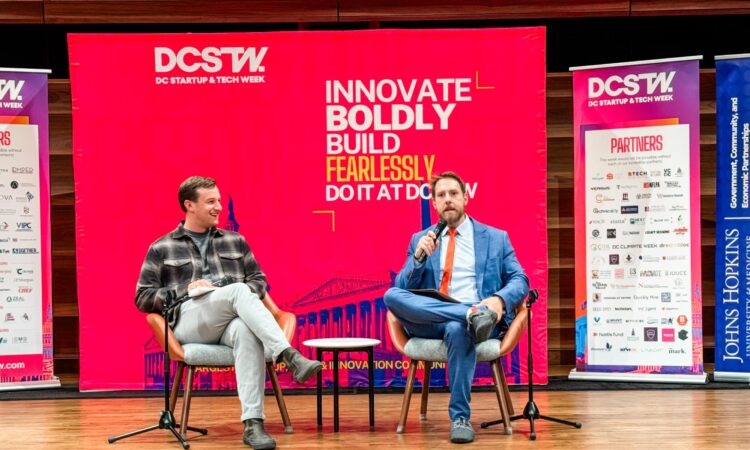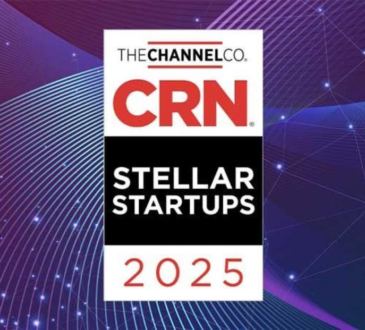
Department of Navy CTO Justin Fanelli is an engineer, and a self-proclaimed numbers person.
His DC Startup & Tech Week panel “Defending the Future: How Innovation is Rewriting National Security” with Station DC Executive Director James Barlia was filled with stats for defense tech founders in and beyond the beltway. But not in the way you think.
“With numbers comes transparency, and that’s harder to ignore.”
Justin Fanelli, US Navy CTO
“With numbers comes transparency, and that’s harder to ignore,” Fanelli said from the stage at the MLK Jr Library. “It also makes it harder for someone in the government to say ‘I don’t understand.’ Now you are speaking in the same language.”
For private sector founders wanting to connect with government stakeholders and become part of the solution to public sector problems, keeping your solution from being lost in translation is the first hurdle to mount.
Throughout the discussion, Fanelli spoke in language that entrepreneurs in the room could recognize — business value. Numbers included.
Here are three to take away:
Closing the ‘2’ between B2G rests mostly on the ‘B’
The government loves process. The private sector loves outcomes. The disconnect between private and public partnerships is that they each get stuck in their own vocabulary, per Fanelli. In this case, it’s on entrepreneurs to make the translation.
How to crack the code? Make it about the numbers. When talking about why a stakeholder should choose your product, in Fanelli’s words, replace “because we’re awesome” with:
- “Here is how much money we can save you.”
- “Here is what we can turn off.”
- “Here are investments that you could make.”
- “Here is how much better we are than the current capability.”
All you need is 4 ‘true fans’
Referencing a 2008 essay by Kevin Kelly called “1000 True Fans,” Fanelli argued that operationalization today for startups, including those selling to the government, calls for hyper-niche demand over generic reach.
According to Fanelli there’s only four “true fans” required for B2G:
- An operational user that no one can dispute
- An acquisition professional who knows how to work the process on the inside
- The “money person” to verify the value of new spend or savings that result from divesting the old
- The Hill to bring the pieces together and make certain the money meets the demand
In relationships, 5% is greater than 50%
Barlia, Station DC executive director, kept the questions going and pulled out insights for entrepreneurs in the audience to make their way in the public sector. Fanelli reiterated that the key to closing the gap between the two is in relationships.
He offered three points to guide the efforts of founders, regardless of industry:
- “Don’t educate all of your customers.” That’s an impossible task, he said. Find the people who are your people and focus on them.
- “Have the relationship before you need anything.” Nurturing people over a long period of time, likely years, long before you have an ask, is the path to successful partnerships.
- “Build versatile-ists. Curate and cultivate unleashed people.” Know the people that will run through walls. Especially your people who will run through walls.
Fanelli shared that he literally makes lists of these so-called “unleashed” people. People from his own organization, people from others, that he knows could be called upon for action.
That was the point that I’ll think about long after this week is over.
Fittingly, it was also Fanelli’s closer — “You don’t need 50% of your people to crush it, you need to know the 5% of people who are willing to crush it.”
Making my list now.




